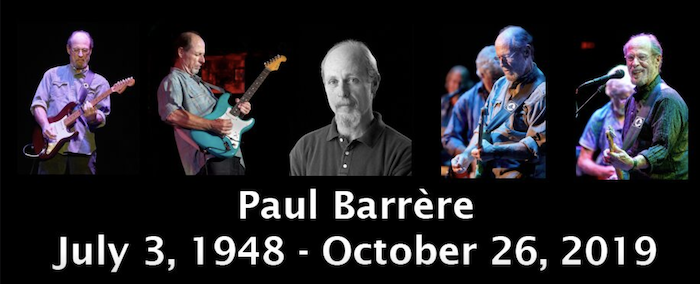 Paul Barrere was a guitarist, singer and songwriter with Little Feat from 1972—three years after the band’s inception—until he died on Oct. 26, 2019. Earlier that year, he spoke with Best Classic Bands’ editor about a variety of topics, centered around the 50th anniversary of Little Feat. Barrere was born July 3, 1948.
Paul Barrere was a guitarist, singer and songwriter with Little Feat from 1972—three years after the band’s inception—until he died on Oct. 26, 2019. Earlier that year, he spoke with Best Classic Bands’ editor about a variety of topics, centered around the 50th anniversary of Little Feat. Barrere was born July 3, 1948.
We began by talking about Funky Feat, a spinoff project that sometimes performed when Little Feat itself was off the road. He also mentions the illness that would take his life before the year was out.
Watch Little Feat in their prime performing “Fat Man in the Bathtub”
Paul Barrere: I just got back from doing a couple of Funky Feat shows up in California.
Best Classic Bands: A lot of people might not know exactly how that relates to Little Feat. Can you explain what Funky Feat is?
Well, since 1999 Fred [Tackett, a member of Little Feat since the band’s 1988 resurrection] and I have been going out doing acoustic duet shows when Little Feat wasn’t working. Then I wound up getting sick with Hep C and eventually, it turned into cancer and I had to have a couple of procedures done—nothing really debilitating but it kind of took me out of the game for a while. Little Feat had pretty much stopped touring other than doing our Jamaica trips [the band’s annual Ramble on the Island festival], which I actually had to miss because of the liver. Then we kind of progressed into doing a week or 10-day run in the Northeast, which is our stronghold. The gigs are always great, tons of fun. In the meantime, Billy [Payne, Little Feat keyboardist] got a gig with the Doobie Brothers, and everybody was kind of just content to be relaxing until we did a few shows, because, let’s face it, we’re old (laughs). So I kept getting these offers to do basically Paul and Fred along with [Little Feat members] Gabe Ford on drums and Kenny Gradney on bass. So this last year we started doing some of those shows. I think we did it a dozen shows and I didn’t know what to call it. We couldn’t call it Little Feat because it’s not really the whole band. So then I took a page out of the Meters’ book; they’ve got the Meters and they’ve got the Funky Meters. Fred and I have a lot of fun; we get to stretch out and jam and Kenny and Gabe are rock solid. It’s been fun.
Do you have other specific plans for the 50th?
Well, no. The plan is we’ve got this March run coming up that leads us into Jamaica, which starts in D.C., goes up to New York and then we work our way south and we’re going to play some places we haven’t played in a long time. We’re going to play Nashville at the Grand Ole Opry. We’re going to play Atlanta, which we haven’t played in a while and four cities in Florida—I can’t even remember the last time we played there. So, it’s kind of just a celebration of 50 years of Little Feat music.
What do you think have been the biggest changes over the years?
I think that the main thing about Little Feat is that it’s been described as a musicians’ band. And the most important part of it is the music itself. When we do get together and we play these songs, it always brings the best out in you because you bring into it whatever you’ve been doing in the meantime. The opportunities are endless as far as soloing. The arrangements pretty much stay the same, but not exactly the same. I think it’s a testament to the fact that all the cats can play.
That was there from the beginning. The whole improvisational aspect, that was built right in.
It was, although toward the end, Lowell [George, the band’s late co-founding guitarist/singer] was focusing more on trying to get a single that would really put us on the map. For some reason we just never could get that one song that would resonate with the general population. In retrospect we were so eclectic that the record company itself didn’t really know how to market the band. There were no jam bands back then. I think at one point they even said, ‘Why can’t you guys be more like the Doobie Brothers?’
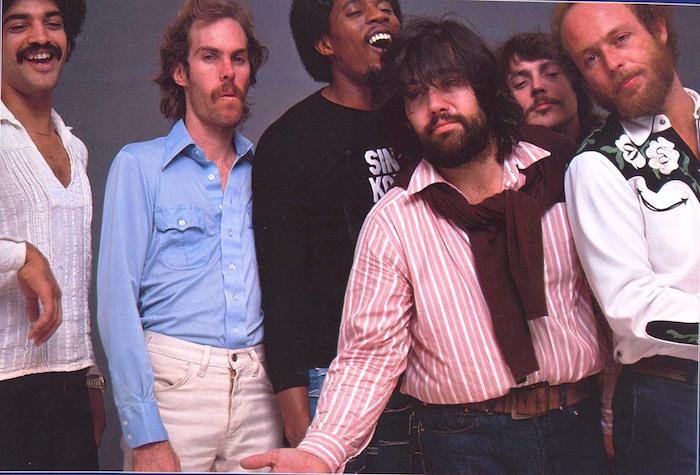
Little Feat’s classic ’70s lineup (l. to r.): Kenny Gradney, Billy Payne, Sam Clayton, Lowell George, Richie Hayward, Paul Barrere (Photo from the band’s Facebook page)
When you first joined, were you already a fan? Were you familiar with what they were up to?
Yeah. See, Lowell had gone to Hollywood High School with my older brothers. He was always like four years ahead of me in school. So when he was starting Little Feat, he came up to Laurel Canyon, where I had this garage band that I was playing with, and asked me if I would audition on the bass. I said, ‘Well, I’m really not a bass player,’ and he said, ‘Well, it’s two less strings.’ Needless to say, it was a lot more complicated than that, and I failed miserably at it and I told them, ‘If you ever need a guitar player, give me a call.’ That was in ’69 when he was putting it together. So when they put out [the 1972 album] Sailing Shoes, and Roy [Estrada, the band’s original bassist] decided to leave just before the release and the tour, they decided to expand the band and brought in Kenny, who brought Sam [Clayton, percussionist] with him from Delaney and Bonnie, and asked me to join. So we went out and started promoting Sailing Shoes while at the same time coming up with songs for [the 1973 album] Dixie Chicken.
Watch Little Feat performing “Willin'” live
What was Lowell’s feeling about having another guitar player?
I think he welcomed it, because for the first three years he was playing rhythm, lead, singing. It’s not really the most ideal situation if you really want to portray the song. I mean, if you’re Jimi Hendrix, fine.
What’s your most prominent memory of making Dixie Chicken?
It was a joy to go into the studio because it really was my first time in the studio making a whole album. I’d been to studios before and recorded songs with people but this time it was like, OK, this is us, we get to do this. It was a lot of fun. There were quite a few shenanigans that went on. I’ll tell you one story that flipped the engineer out. Lowell and I were futzing around in the studio and he pulled out the fire extinguisher. He was going to spray me with it. So I ran into the booth and stood behind the board and he shot his stuff at me and it got all down in the faders. We’re trying to clean it up when the engineer came in and he was just livid. “No recording today!” It was fun. We were having a good time.
Watch Little Feat perform “Dixie Chicken” on The Midnight Special, with Bonnie Raitt and Emmylou Harris sitting in
For a lot of people Dixie Chicken is Little Feat. Did you have a sense that this album was really the one that was going to turn things around?
Well, I had hopes. You never know with music or any kind of art what the general public’s going to embrace. But we felt really good about it because there were a lot of extremely wonderful grooves and songs. The portrayal that we did of “On Your Way Down,” which was my first-ever live recorded solo, there was a lot of magic going on.
Related: Our Album Rewind of Dixie Chicken
For you was it more of a studio band or more of a live band?
Those are two different worlds, really. I love both of them. But I think the live performing Little Feat is what really brings the audience in. You can sit and listen to records and go, “Wow, that’s different. That’s really cool.” But then if you go see somebody live and they’re even better than that, you go, “Whoo. Yeah, wait a minute.”
Are there specific tunes that you feel best represent the band?
There’s quite a few, really. “Fat Man in the Bathtub,” “Spanish Moon,” “All That You Dream,” “Dixie Chicken,” “Willin’,” “Oh Atlanta.”
All early ones.
Well, there’s the newer ones too: “Let It Roll.” “Texas Twister.” The last record that we did was “Rooster Rag.” We really embraced that song a lot. It’s funny ’cause when we put the band back together again, we said OK, we’re going to give this a shot. If the material and the recording don’t hold up to the nine albums we made previously, it’s going to be a one and done. So when we finished the record, I played “Hate to Lose” and then I played “Dixie Chicken” one after the other at my home, and I said, “This is great because you can’t tell which one’s from which era.” It’s got that same kind of infectious groove and very timeless.
Watch Barrere sing “Let It Roll” with Little Feat
Was there a feeling of competition when you were all contributing songs or was it everybody helping each other out?
Lowell had actually asked Billy and I, just before Time Loves a Hero, to step up and write more songs, bring some more stuff to the table, because he was pressured by the record company to make a solo record, which if you notice he didn’t put a lot of original material on. So we needed some songs and I was more than happy to do that. And he would sing them and stuff. You still have that group feel.
Which of the Warner Bros. albums you think were the most successful?
Oh, Waiting for Columbus. That’s the one that sold the most. That’s like asking which is your favorite kid.
I want to ask about Kenny, Richie and Sam. What did each one contribute to totality of the sound?
Richie was extremely important. We used to call him the rock star of the band because he had the look and he would come up with grooves that were unlike anybody else. Drummers would come and check him out and go, “Man, that’s phenomenal.” It didn’t matter if things were a little out of time or a little on top of it, a little behind it. It just fit and it set up that syncopation that Kenny and Sam would add to the flavor. When you think of the difference between Sailing Shoes, which is a really great produced record, but is very eclectic, to once Kenny and Sam and I were in the band and we kind of changed it more into a bluesy feel, that’s pretty much what happened between Sailing Shoes and Dixie Chicken. Sam, Kenny and I kind of brought this R&B.
The Last Record Album [1975] was a whole other shift.
Yeah, we weren’t progressing like we had hoped. We really thought that the band deserved a lot more attention than it got. We had great radio presence, a lot of fans in radio, but it was at alternative radio—back then I think they called it independent or something. We couldn’t get into that top 40 niche and so, there was frustration on Lowell’s part more than anything else. The rest of us, we were happy just to be making music and going on the road. Lowell liked the making music part but he wasn’t really happy going on the road. So things started to wane then, and then the idea of doing [1978’s double live album] Waiting for Columbus came along and that pretty much shot us up into, oh gosh, now we’re headlining small arenas and carrying sound and lights. We had a couple of buses and things started rolling.
Listen to “She Lays Down the Beat” from Barrere’s 1983 debut solo album
What do you think caused the band to split? Was that Lowell’s decision?
It wasn’t really a split. He had to go on the road to promote his solo record [1979’s Thanks, I’ll Eat It Here]. Billy wanted to have more of a hand in the production. I was kind of caught between two worlds and I decided that I would join up with Billy at that point and we would try this thing with Craig Fuller and Bob Glaub and a couple other people. We all worked together for Nicolette Larson, and that was going nowhere fast. But while Lowell was on the road he was calling people going, “I’m going to get it back together. I’m going to get back together.” but unfortunately he didn’t come back.
Watch Funky Feat, featuring Barrere and Fred Tackett, perform “Sailin’ Shoes,” “Willin'” and “Don’t Bogart That Joint” in 2016
Were you surprised when he died?
Oh, yeah. Absolutely. I mean, we all knew that there was a problem there but we didn’t think it was that bad.
What do you think he’d be doing now if he had survived?
He would be probably sitting in his little studio up in Topanga with all this great digital equipment creating monsters. He was amazing that way. He used to record demos on cassettes and edit them.
What led to the decision to reform the band with Craig Fuller and Fred Tackett nine years after Lowell’s death?
We had done an impromptu jam session at this rehearsal hall called the Alley in North Hollywood. We would rehearse there, and so did Bonnie [Raitt] and Emmylou [Harris]. Just a whole lot of people would go in; there were two different rooms. They had redesigned one of the rooms and dedicated it to the memory of Lowell and to Little Feat. There were tons of Little Feat stuff on the walls, old backdrops hanging from the ceiling. The guy called me up and said, “Can you get everybody over here and we’ll christen the room?” I said, “Let me see if everybody’s home.” At the time I think Billy was playing with either James Taylor or Bob Seger. Sam was playing with Jimmy Buffett. Kenny was doing Bobby and the Midnites with Bob Weir. Richie was playing with Joan Armatrading or Robert Plant. And I was basically kicking around with the Blues Busters, playing the chitlin circuit. I actually got to play a whole tour with [guitarist] Cornell Dupree. That was like an education. So I got everybody together. We went in, we played, we had fun. We laughed; it was like, yeah, we can remember parts of songs and other parts we couldn’t. We’d stop and go, “I think you did this,” and then we’d play the song and go, “Wow, that feels really good.” So later that night Billy called me and says, “What do you think of putting the band back together? We’ll get a singer and another guitar player.” I said, “It’s worth a shot. The music is fun. I enjoy playing it.” That’s pretty much how the whole thing started the wheels turning. We had thought about who to get for a singer: Robert Palmer, but his career was exploding with his back line of beautiful girls. There was Bonnie Raitt and there were a couple other people, but then Craig Fuller called just out of the blue and needed to talk to Billy about some publishing thing on some songs they had written, and Billy mentioned to him we were thinking of putting the band back together. “Would you like to come up and sing?” And he said sure. He came out and just killed it. At the time, Fred Tackett was playing with Billy. I guess it was with Seger. And so we asked Fred if he wanted be the other guitar player because, first of all, he knew the grooves; he played on some of the records. He’s multi-talented and he and I play really well together.
What do you think of the albums you guys made after Lowell, like Let It Roll?
I think they’re are all really cool. I think we made a couple of mistakes trying to be maybe too hip. We shouldn’t have called [their 1990 album] Representing the Mambo; we should have called it Texas Twister. Sometimes when you’re too hip for the room, it’ll cost you.
Moving ahead again, from 1993 to 2009 you had a woman singer, Shaun Murphy, another big change. That was actually the longest-lived lineup.
She did backgrounds on all the records and so forth. We were recording [the song] “Romance Without Finance” at my house, which is where we recorded that whole album [1995’s Ain’t Had Enough Fun] and she just knocked it out. And once again Billy said, “What do you think about adding her?” And I said, “Well, it’d be cool if we’re adding a girl.”
You lost Richie Hayward in 2010 and gained Gabe Ford. What was that transition like?
Well, once again, we’re wondering who are we gonna get to replace Richie? Here’s a guy that created all these grooves and we didn’t have a clue who we’re going to get. Do you call Jim Keltner and offer him a piece of the band? Then Gabe [who had been the band’s drum technician] said, “You know, I am a drummer. I played with my uncles and father and stuff.” I said, “That’s right, he played with Robben [Ford, Gabe’s uncle].” He says, “I’ve been sitting here for five years listening to these grooves. Give me a shot.” We booked a place for two days. He came down, he played one day and we said, “Cancel tomorrow, the guy’s got the gig.”
The last new album was [2012’s] Rooster Rag. Do you think there’ll be a new one soon?
We’ve discussing it with different labels and so forth, whether or not they would like a record. The offers are like, you can barely pay the studio. They want you to do it all on your own, unless you’re Lady Gaga, I guess. So it’s like, we haven’t really come across somebody who wants to step up and finance a situation that would allow us to go in and record. Billy and I have talked about it; we’ve talked about having Larry Campbell produce, which I think would be great. He did such a great job with Levon [Helm]’s stuff. So it’s just a question of who’s got the money? It’s going to take some dollars to do, obviously.
Tell us about the Jamaica festival. How did that come about?
The paid vacation? The former management group that we had came to us and said, “Some bands are doing these cruises. But we have another idea. We’ll go to Jamaica and we’ll take over a resort, put a stage on the sand and have like a beach party.” We said, “That sounds a lot better than being on a boat.” I think this year is going to be number 16. So we started doing them and we’ve had different guest artists come in. we’ve had Toots and the Maytals, we’ve had Sam Bush, Coco Montoya, Taj Mahal. We’ve had all these different people come and enjoy the surroundings and play and for these last couple ones, we had Jackson Browne. We love having Larry [Campbell] and Teresa Williams and the Ramble Band with Amy Helm, even though they’re not always playing together anymore. It’s fun for them too because they have to go back and learn that catalog. In the meantime, we get to use their horn section, which is a kick in the behind. This year we’ve got Lucinda Williams coming. Anders [Osborne] is going to come play acoustic solo. Vince Herman is going to come and play acoustic solo. We’ve had Leftover Salmon a couple of times. The shows seem to be really popular. People love coming down.
Where do you see it all going?
As long as I keep waking up on the right side of the lawn, it’ll probably remain the same: Keep it low profile and go do gigs when they make sense and plan for the next vacation in Jamaica.


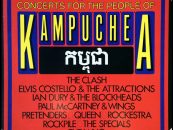
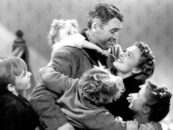
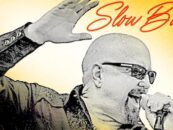
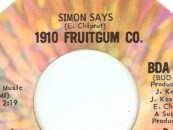

2 Comments so far
Jump into a conversationDiamond Head Crater in Oahu, Hawaii was site of early live gig for Little Feat. The Sunshine Festival had a run from 1970-77. Santana, Tower of Power, Styx, Journey (Robert Fleischman vocalist) plus others. Might be good “Back In The Daze” story.
I was stationed at Pearl Harbour from 69 to 72 and I remember seeing the Feat with Santana at the crater fest. High times indeed.